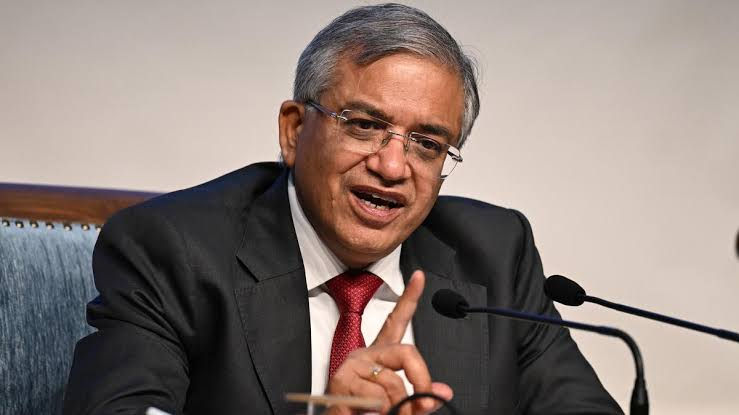Privacy or Cover-up? The Election Commission’s Refusal to Release Voting Footage
- Sainhita Shende

- Sep 7
- 3 min read
During a live press conference on 17 August 2025, the Election Commission of India (ECI) finally addressed the allegations raised against it. Among many questions, Chief Election Commissioner (CEC) Gyanesh Kumar was asked why the ECI is refusing to release CCTV footage from the 2024 Maharashtra elections. His response carried an undertone of mockery and left behind more confusion than clarity.

Election Commission’s Justification
Every important question posed to the ECI on Sunday was met with evasive, confusing answers, falling short of the high standards expected from the body tasked with safeguarding the integrity of India’s elections. The most bizarre explanation from the CEC concerned the withheld footage:
“Should the Election Commission release the CCTV videos of mothers, daughters-in-law, daughters, or any other voters for this?”
The statement seemed to appeal more to emotion than to cite any legal precedent. A more reasonable justification could have pointed to Section 128 of the Representation of the People Act, 1951, which protects the secrecy of voting and warns against misuse by malicious actors.
The Opposition’s demand for the footage stems from the ECI’s claim that a massive turnout occurred after 5 pm, a claim the Leader of the Opposition disputes. Members also questioned the Commission’s decision to reduce CCTV retention to just 45 days, a rule change introduced right before major elections. When India Today filed an RTI seeking:
A copy of the report recommending the reduction,
All internal correspondence on the new retention guidelines, and
Records of any official investigation into footage misuse,
the ECI refused, citing the matter as sub judice before the Supreme Court.
Congress spokesperson Pawan Khera sharply asked: “If they have no intention of sharing the footage, why bother recording it at all?”
Why Transparency Matters
The ECI’s reluctance signals not privacy concerns but an evasion of accountability. The Central Information Commission (CIC) has previously ruled (2017) that the mere sub judice status of a matter is not a valid ground for withholding information.
The CEC’s concern for the “privacy of women voters” also rings hollow. Voting lines are already public, and while the act of casting a ballot is private, the footage sought concerns queues and polling station activity, not ballot secrecy. If anything, knowing the footage will never be inspected only emboldens laxity among officials. Transparency is vital, especially as India considers “one nation, one election.”
Past Controversies
Electronic Voting Machines (EVMs) have long been a point of contention. First introduced in Kerala in 1982, they became standard by the 2004 Lok Sabha elections. To strengthen trust, the Voter Verified Paper Audit Trail (VVPAT) was rolled out nationwide by 2017. VVPAT allows voters to see their ballot recorded for seven seconds, with slips stored securely for later verification.
The Supreme Court in 2019 (N. Chandrababu Naidu vs. Union of India) ordered five random booths per constituency to be verified via VVPAT slips, rejecting calls for 50% verification as too time-consuming. The ECI argues this sample is statistically sufficient, though critics remain unconvinced.
As recently as April 2024, the Association for Democratic Reforms (ADR) petitioned the Supreme Court for 100% VVPAT counting, citing past discrepancies. The Court dismissed the plea, cautioning against excessive suspicion and emphasizing faith in the system.
Given that India also exports EVMs to Bhutan, Nepal, and Egypt, the machines’ credibility has international implications.
International Comparison
Globally, democracies have taken different approaches:
Brazil (2022): Published paper copies of votes online in real time for public scrutiny.
Estonia (2023): Held the world’s first largely online election, with 51% voting digitally.
Germany (2009): Banned EVMs entirely, reverting to paper ballots, citing transparency as a democratic right.
For India, Germany’s slow paper system would be impractical. But adopting Brazil’s practice of publishing VVPAT counts or Estonia’s secure i-voting model could increase efficiency and confidence.
Conclusion
Public trust in the ECI is steadily eroding as a system designed for checks and balances grows increasingly opaque. The question remains: is the Commission truly safeguarding voter privacy, or shielding itself from scrutiny?
As George Orwell’s Animal Farm warned, secrecy and manipulation corrode democracy from within. In this case, the CEC’s evasive response is more troubling than any precedent he might have cited. Unless transparency is restored, India risks reducing its elections to mere ritual; form without substance.







Comments